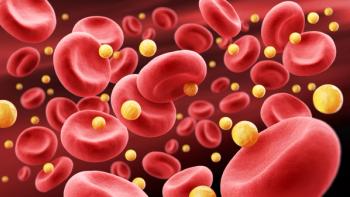
More Than Half of HIV Cases Diagnosed Late in Europe
Nearly 30,000 individuals were diagnosed with HIV in the European Region in 2016.
A new report from the World Health Organization (WHO) found that the European Region is the only area in which HIV cases are increasing worldwide.
The study found that more than 160,000 patients were newly-diagnosed in 2016, including more than 29,000 new cases from the European Union and European Economic Area (EU/EEA), according to a press release.
Significantly, 51% of the new HIV diagnoses occurred in a late stage of infection, the WHO said.
“The HIV epidemic continues to rise at an alarming pace in the European Region, mostly in its eastern part, which is home to almost 80% of the 160,000 new HIV diagnoses,” said Zsuzsanna Jakab, PhD, regional director for Europe, WHO. “This is the highest number of new cases ever recorded in 1 year. If this trend persists, we will not be able to achieve the Sustainable Development Goal target of ending the HIV epidemic by 2030.”
These findings demonstrate that the current approach to testing and treating HIV in Europe is lacking and there are significant improvements needed.
“Testing people late, particularly those at higher risk of infection, results in late treatment and further contributes to the ongoing spread of HIV,” Dr Jakab said. “The later people are diagnosed, the more likely they are to develop AIDS, thus leading to more suffering and death.”
Early HIV diagnosis increases the likelihood of patients getting on therapy sooner, which can expand life expectancy and reduce the risk of transmitting HIV, developing AIDS, and contracting tuberculosis, according to the WHO.
“On average, it takes a person about 3 years from the time of infection until they are diagnosed, which is far too long. This results in poorer long-term health outcomes for the many people who are diagnosed late and also increases the risk for onward HIV transmission,” said Andrea Ammon, MD, MPH, director, European Centre for Disease Prevention and Control. “Two-thirds, that's 68% of the new AIDS diagnoses in the EU/EEA happened only within 3 months after the HIV diagnosis, which indicates that these people have had the infection for many years previously.”
Among patients 50 years and older, the authors discovered that 65% were diagnosed with HIV late in the infection. For these patients, the WHO notes that community health care services are crucial for increasing early diagnoses.
The WHO also said that testing patients based on health conditions such as sexually transmitted infections, hepatitis, tuberculosis, or cancer could result in earlier HIV diagnosis.
To remedy late diagnoses, Europe should prioritize prevention by promoting awareness, safe sex, needle exchanges, and increasing access to pre-exposure prophylaxis, according to the study.
The authors said that providing HIV counseling and encouraging testing has the potential to play a large role in speeding diagnoses in Europe.
Lastly, the WHO said that rapid access to therapy is crucial for patients.
In order to achieve benchmarks set forth by the WHO and other organizations, steps towards early diagnosis need to be made, according to the authors.
“To meet our goal of ending HIV, we need to ensure early diagnosis for everybody, reaching out to risk groups and to the most vulnerable,” said Vytenis Andriukaitis, MD, European commissioner for Health and Food Safety. “To succeed, we must work together across borders, across silos, across organizations to promote easy access to diagnosis and to fight barriers such as stigma and discrimination.”
In contrast,
Newsletter
Stay informed on drug updates, treatment guidelines, and pharmacy practice trends—subscribe to Pharmacy Times for weekly clinical insights.


















































































































































































































